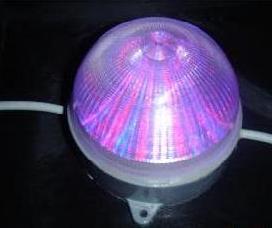 1. Luminous flux. It is the light energy that the light source can feel in the eyes of all parties in the space. The unit is lumens (lm). It is an important indicator of the ability of an electric light source to produce light energy.
1. Luminous flux. It is the light energy that the light source can feel in the eyes of all parties in the space. The unit is lumens (lm). It is an important indicator of the ability of an electric light source to produce light energy. 2. Lumens. The unit of measurement of luminous flux is equal to the luminous flux emitted by a uniform luminous point of a candlelight within a unit solid angle.
3. Luminous efficiency. It is the ratio of the luminous flux and the input electric power output by the illumination source, which is the luminous flux per unit of power. Unit lumens/watt (lm/W). It is an important indicator reflecting the performance of the light source.
4. Color temperature. When the color package of the light emitted by the light source is the same as the color of the radiation emitted at a certain temperature of the black body, the temperature of the black body is referred to as the color temperature of the light source, and is simply called the color temperature. Absolute temperature K as a unit.
5. Color rendering index. When the light source has the same color transfer performance as the reference light source (standard white light), the light source has a color transfer index of 100. It is a parameter that measures the light source's ability to reproduce standard white light.
6. Rated voltage. The voltage required by the electric light source during normal operation, ie the specified operating voltage. The unit is volts (V).
7. Rated power. The input power of an electric light source when used at rated voltage. The unit is watts (W).
8. Service life Light source from the beginning to use can not light or can emit light but can not be used (such as Xenon lamp severely arc) or its luminous flux output is reduced to a specified degree (such as indium lamp light output can not make the screen reproduce good figure The number of hours experienced by the elephant). This parameter is not for a light bulb, but is the average life expectancy of such products.
9. When the lamp discharges the gas discharge lamp normally, the voltage drop across the lamp electrode. The unit is volts (V).
10. Trigger Voltage The light source cannot start its own operation at rated voltage, but requires an applied voltage to start ignition. This applied voltage is called the trigger voltage. The unit is volts (V). Trigger voltage is sometimes referred to as breakdown voltage.
Li Ion Battery Raw Materials,Lithium Ion For Battery Material,Battery Materials Ceramic Separator,Other Making Material Of Battery
Zhijiang BSL battery technology service company , https://www.bslbatteryservice.com